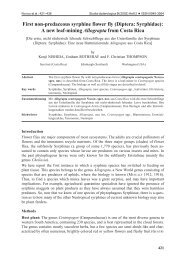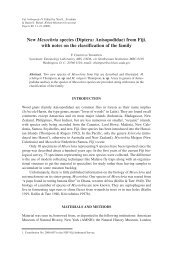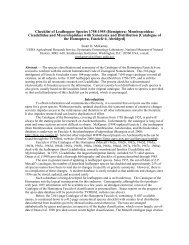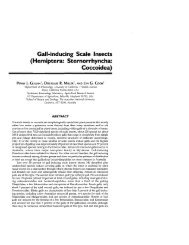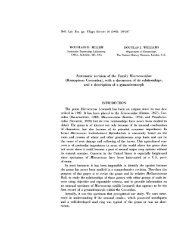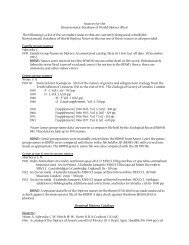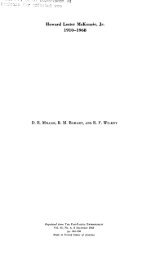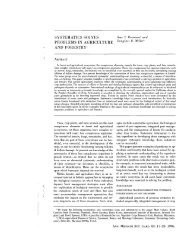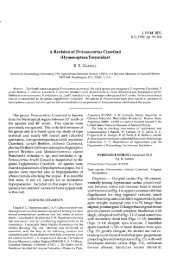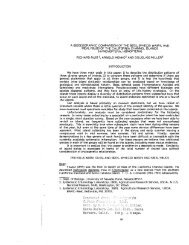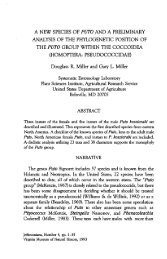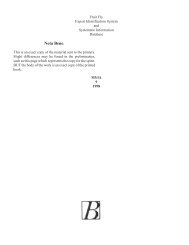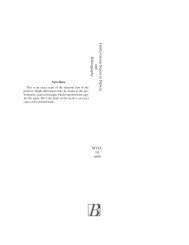Miller1971a - Systematic Entomology Laboratory
Miller1971a - Systematic Entomology Laboratory
Miller1971a - Systematic Entomology Laboratory
You also want an ePaper? Increase the reach of your titles
YUMPU automatically turns print PDFs into web optimized ePapers that Google loves.
OCTOBER 1971]<br />
MILLER-SCI MEALYBUGS<br />
301<br />
ferent (Le., species which occur on mainland beaches occur on island<br />
beaches) .<br />
Perhaps the most interesting aspect of the Santa Cruz Island mealybug<br />
fauna is found among the species which show disjunct distribution<br />
patterns. They are as follows:<br />
Southernmost<br />
Approximate<br />
mainland<br />
distance north<br />
Mealybug locality from Oxnard<br />
A nisococcus quercus Mountain View, 275 miles<br />
Santa Clara Co.<br />
Discococcus simplex San Miguel, 135<br />
San Luis Obispo Co.<br />
Pseudococcus longisetosus Pacific Grove, 225<br />
Monterey Co.<br />
Rhizoecus bicirculus Weaverville, 480<br />
Trinity Co.<br />
Trionymus caricis Patterson, 250<br />
Stanislaus Co.<br />
Although only five pseudococcids show this pattern, it is significant that<br />
they are all northern disjunctions. This is consistent with the findings<br />
of Raven (1967) and Axelrod (1967), who indicate that the majority<br />
of the non-endemic Northern Channel Island plants which are not present<br />
on the adjacent mainland are present in northern California.<br />
Pseudococcus beardsleyi, also shows an interesting distribution pattern,<br />
occurring in several small areas in the higher elevations of Santa<br />
Cruz Island and in similar areas at Pt. Reyes, Mt. Tamalpais, and Mt.<br />
Wilson on the mainland. The occurrence of this species in small, widely<br />
separated areas is reminiscent of the restricted distribution patterns of<br />
many plant relicts. It seems significant that Pt. Reyes, Mt. Tamalpais,<br />
and the upper elevations of Santa Cruz Island are inhabited by a number<br />
of these relicts and, in fact, could be considered refugia. Therefore, if<br />
P. beardsleyi is a relict pseudococcid, careful collecting in these refugia<br />
might reveal other interesting mealybug species.<br />
SUMMARY<br />
There are 13 genera and 23 species of mealybugs known on Santa Cruz<br />
Island none of which are endemic. The pseudococcid fauna of the island<br />
is a depauperate aggregation of species most like the mealybugs of the<br />
adjacent mainland, with a small representation of northern species. The<br />
majority of the Santa Cruz Island mealybugs have been previously re



